Disclosure: This article contains affiliate links. We may earn a commission from purchases at no extra cost to you, which helps our travel content.
When the winter sun casts its golden hue across Hampi's boulder-strewn landscape, something magical happens. The ancient granite formations—shaped over millions of years—reveal themselves as nature's perfect playground for climbers seeking both physical challenge and spiritual connection. Having lived in Chennai for the past seven years, I've made the pilgrimage to Hampi's bouldering paradise annually, watching as this once-quiet climber's secret has transformed into an international destination while somehow maintaining its soul. What draws me back isn't just the world-class climbing but the sacred geometry that reveals itself in both the natural formations and the nearby 14th-century ruins—a UNESCO World Heritage site where history and adventure intertwine in ways I've rarely experienced elsewhere in my travels across three continents.
Understanding Hampi's Bouldering Landscape
Hampi presents a geological wonder that feels almost deliberately designed for climbers. The landscape comprises thousands of granite boulders scattered across approximately 15 square kilometers, divided by the Tungabhadra River into what climbers call the 'Hampi Side' (where the ancient ruins stand) and 'Hippie Island' (Virupapur Gaddi).
What makes Hampi unique among world bouldering destinations is the perfect convergence of factors: the granite's high friction coefficient, the variety of holds from slopers to crimps, and problems ranging from V0 to V13 on the bouldering scale. As a risk manager by profession, I appreciate how the generally flat landings reduce injury potential compared to other bouldering sites I've visited in Southeast Asia and Central America.
My favorite climbing area remains the 'Rishimukh' sector, where I've spent countless hours working on a challenging V6 problem called 'Golden Shower.' The boulder's southeastern face catches the morning light in a way that illuminates perfect geometric patterns in the rock—fractals and curves that mirror the mathematical precision I've observed in the nearby Vittala Temple's architecture.
During my last trip, I noticed several climbers using the Black Diamond Momentum Climbing Shoes which perform exceptionally well on Hampi's granite. The rubber compound offers excellent grip on the unique texture of these ancient stones without compromising sensitivity—essential when you're balancing on barely-there crystals 15 feet up.

💡 Pro Tips
- The Golden Boulder area offers the highest concentration of beginner-friendly problems (V0-V2)
- Climb early morning (6-10am) or late afternoon (4-6pm) to avoid the midday heat
- Bring extra chalk—Hampi's dry winter climate still manages to make hands sweat profusely
Sacred Geometry: Climbing Among Ancient Patterns
As someone fascinated by sacred geometry across cultures, Hampi offers a rare opportunity to observe these patterns in both natural and human-made forms. The granite boulders themselves display remarkable geometric properties—perfect spheres, balanced eggs, and honeycomb-like weathering patterns that follow the golden ratio.
During winter mornings, when the light strikes at precisely the right angle, you can observe how the shadows cast by certain boulders create perfect geometric projections on the ground. I've documented these patterns over several seasons and noticed how they align with architectural elements in the nearby Virupaksha Temple.
One of my most profound experiences came during last year's winter solstice, when I took a rest day from climbing to observe how the light interacted with the ruins. At the Vittala Temple complex, the famous stone chariot casts shadows that align perfectly with the carved floor patterns only during this seasonal transition—something I suspect the original architects designed intentionally.
For climbers interested in this intersection of adventure and sacred sites, I recommend setting aside at least two days for exploring the ruins between climbing sessions. The geometric principles evident in both the natural formations you climb and the temples you visit create a fascinating dialogue between adventure sport and cultural heritage.
To properly document these patterns, I've found my DJI Mini 2 Drone invaluable for capturing aerial perspectives that reveal geometric relationships impossible to see from ground level. The drone's lightweight design makes it easy to carry in my climbing daypack, and its 31-minute flight time is perfect for capturing the golden hour light that best reveals these patterns.
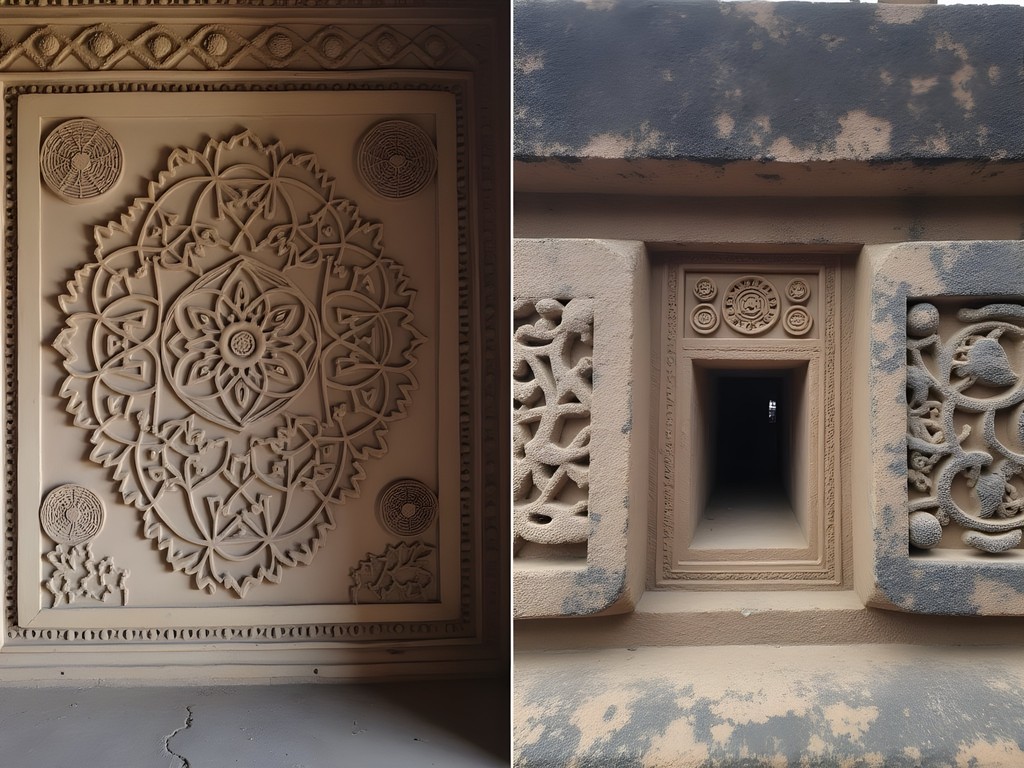
💡 Pro Tips
- Visit the Vittala Temple complex early morning for the best light to observe geometric patterns
- Bring a compass to note directional alignments between natural formations and temple structures
- The winter solstice (December 21-22) offers unique shadow alignments throughout the ruins
A Solo Climber's Guide to Hampi's Community
Arriving in Hampi alone might seem intimidating, but it hosts one of the most welcoming climbing communities I've encountered in my travels. The social hub remains centered around the guesthouses on Hippie Island, where climbers from across the globe gather to share beta (climbing advice), plan the next day's sessions, and enjoy budget-friendly meals.
As a solo female traveler who's visited Hampi five times now, I've developed a routine that balances safety with the freedom to explore. Each morning begins with a simple breakfast at my guesthouse, followed by connecting with other climbers heading to the same areas. Impromptu groups naturally form, providing both climbing partners and cultural exchange.
My typical day involves climbing from 7-11am, retreating during midday heat, then returning for an evening session from 3:30-6pm. Evenings often feature informal gatherings where climbers share videos of the day's sends (successful climbs) and plan the next day's objectives.
For accommodation, I've found the sweet spot in mid-range guesthouses on Hippie Island that offer private rooms with basic amenities for around 800-1200 INR per night (approximately $10-15 USD). While ultra-budget options exist, having a secure space to store climbing gear and a reliable ceiling fan for recovery sleep has proven worth the slight premium.
The climbing community here operates on trust and reciprocity. My second day in Hampi during my first visit, I'd forgotten my crash pad at the guesthouse. Without hesitation, a group of German climbers I'd just met invited me to share theirs. This generosity has remained consistent across my visits, regardless of nationality or experience level.

💡 Pro Tips
- Join the 'Hampi Climbing' WhatsApp group upon arrival to connect with other solo climbers
- Bobby's Hideaway on Hippie Island is a reliable meeting point to find climbing partners around 6:30am
- Solo female climbers should consider staying at Goan Corner or Shanti Guesthouse for their established safety reputation
Budget-Friendly Logistics for a Week of Climbing
Having managed risk for corporations before my life in India, I approach travel planning with an eye for maximizing value while minimizing unnecessary expense. Hampi delivers exceptional value for climbers on a budget, with total weekly costs (excluding transportation to/from Hampi) ranging from ₹12,000-20,000 ($150-250 USD) depending on your comfort preferences.
Getting There: Most climbers arrive via overnight bus from Bangalore (8-9 hours) or Goa (6-7 hours), costing ₹600-1,200 one-way. I recommend booking through RedBus app for reliable operators. From Hospet bus station, auto-rickshaws charge ₹250-300 to Hampi Bazaar, though savvy travelers can use the local bus for just ₹15.
Accommodation: Hippie Island offers the best value, with basic rooms starting at ₹400/night and mid-range options around ₹800-1,200. My personal favorite remains Shanti Guesthouse, where the rooftop rooms provide sunrise views over the boulders and reliable hot water—essential for soothing climbing-worn muscles.
Climbing Essentials: While bringing your own gear is ideal, Tom & Jerry Climbing Shop near Hampi Bazaar rents crash pads for ₹300/day with weekly discounts. They also sell climbing shoes, chalk, and the essential guidebook Hampi: Bouldering in India (₹1,500), which I consider mandatory for navigating the thousands of problems.
For climbing days, I've found my Petzl GriGri Belay Device invaluable for the occasional sport routes near Anegundi, though it's primarily a bouldering destination. The device's assisted braking feature provides an extra safety margin when climbing with new partners.
Food & Water: Budget ₹500-800/day for meals, with breakfast at guesthouses (₹100-200), packed lunch for climbing areas (₹150), and dinner at riverside cafes (₹200-400). Bring a reusable water bottle and purification tablets—the LifeStraw Go Water Filter Bottle has saved me countless plastic bottles while ensuring safe hydration during long climbing days away from filtered water sources.
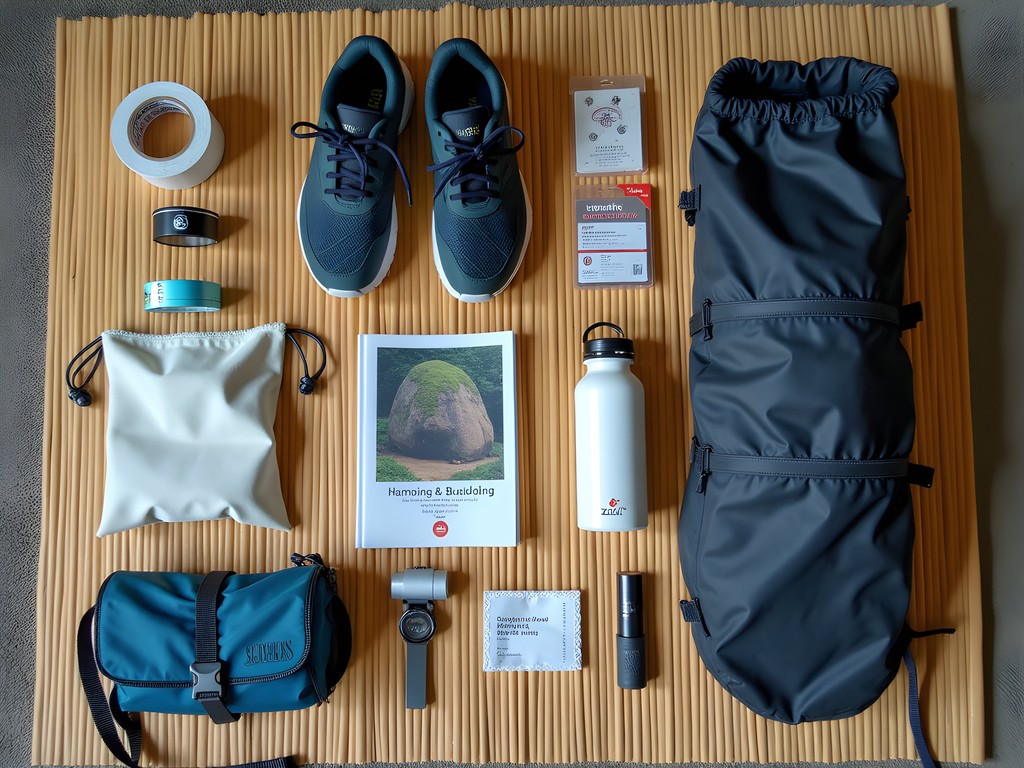
💡 Pro Tips
- Purchase the 'Hampi Boulder' app (₹800) as a backup to the physical guidebook—it works offline and receives updates
- Negotiate weekly rates for crash pad rentals—you can typically get 7 days for the price of 5
- Bring twice as much climbing tape and skin repair balm as you think you'll need—Hampi's granite is notoriously rough on hands
Seasonal Rhythms: Winter's Perfect Climbing Window
Having visited Hampi during different seasons, I can confidently say that winter (November through February) offers the perfect climbing conditions. The temperature sweet spot occurs from mid-December through January, when daytime highs hover between 26-30°C (79-86°F) and nights cool pleasantly to 15-18°C (59-64°F).
This seasonal window provides ideal friction on the granite—a critical factor for successfully completing harder boulder problems. During my summer visit (an ill-advised experiment), the rock became uncomfortably hot by 9am, making holds slippery and increasing the risk of skin injuries.
Winter in Hampi also reveals fascinating seasonal changes in the landscape. The Tungabhadra River recedes to reveal additional bouldering areas inaccessible during monsoon months. The quality of light during winter creates what photographers call the 'golden hour' that extends longer than usual, illuminating the boulders with warm tones that enhance the visibility of holds and features.
I've documented how certain boulder problems change character throughout the winter season. Early November can still hold residual humidity from the monsoon, slightly reducing friction. By late January, the prolonged dry conditions create the 'peak friction' window that sees climbers achieving their hardest sends.
The winter season also coincides with several local festivals, particularly around Pongal in mid-January, when the nearby villages celebrate with music and ceremonies that offer cultural experiences between climbing days. These celebrations often incorporate geometric rangoli patterns that echo the forms found in both the temple architecture and natural boulder formations—another expression of sacred geometry that connects human creativity with natural forms.
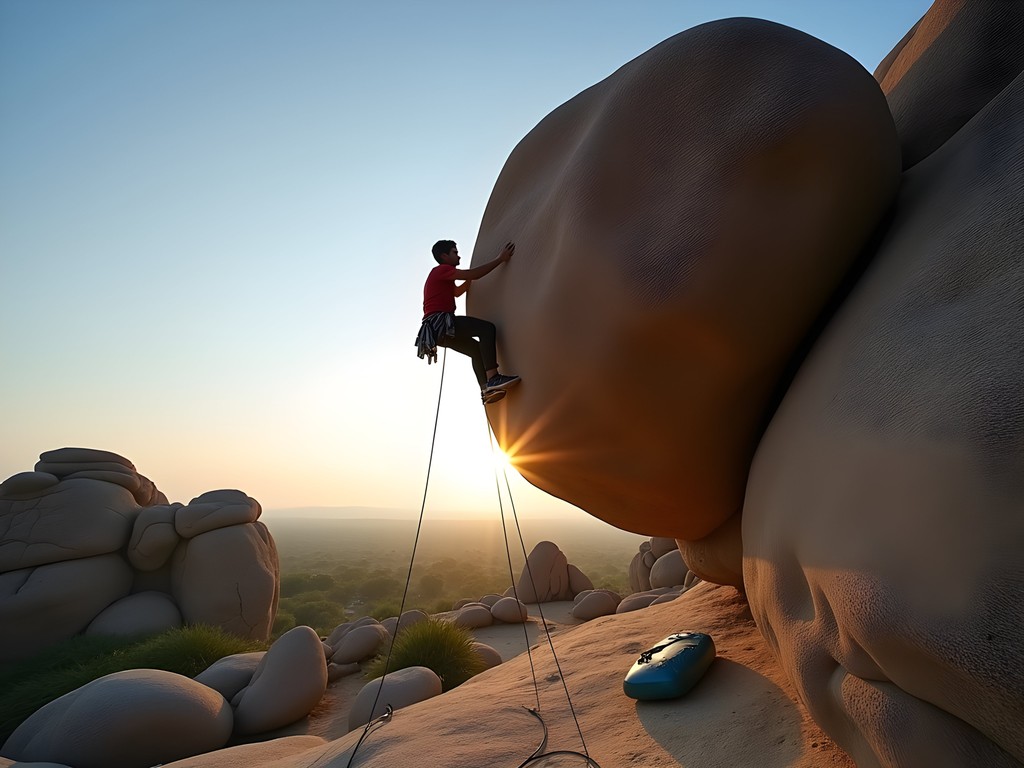
💡 Pro Tips
- The last week of December through the third week of January typically offers the best climbing conditions
- Bring a light down jacket for early morning approaches—temperatures can be surprisingly cool before sunrise
- Schedule rest days to coincide with local festivals for cultural immersion opportunities
Final Thoughts
As I chalk up for one final boulder problem on my last evening in Hampi, watching the sunset paint the ancient granite in shades of amber that match my eyes, I'm reminded why this place calls me back year after year. It's not just the world-class bouldering that brings me here—it's the rare convergence of physical challenge, cultural depth, and geometric perfection that satisfies both body and mind. For the solo traveler willing to make the journey, Hampi offers more than just climbing—it provides a community, a history lesson, and a meditation on how human creativity and natural forces have shaped stone in remarkably similar patterns across millennia. Whether you're sending your hardest projects or simply enjoying the movement across this ancient stone, Hampi's boulders have something profound to teach about balance, persistence, and finding your path among seemingly impossible obstacles. I'll be back next winter, fingers healed and spirit ready for whatever new problems—both on and off the rock—await discovery.
✨ Key Takeaways
- Winter (November-February) offers optimal climbing conditions with perfect friction and comfortable temperatures
- The climbing community in Hampi is exceptionally welcoming to solo travelers, making it easy to find partners and information
- Budget travelers can experience world-class bouldering for under $250/week including accommodation, food, and gear rental
- Allow time between climbing sessions to explore the sacred geometry connections between the natural boulders and ancient temple architecture
📋 Practical Information
Best Time to Visit
Mid-December through January
Budget Estimate
₹12,000-20,000 ($150-250 USD) per week excluding transportation to/from Hampi
Recommended Duration
7-10 days
Difficulty Level
Intermediate


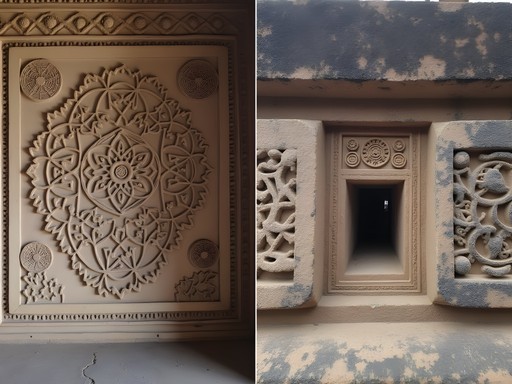
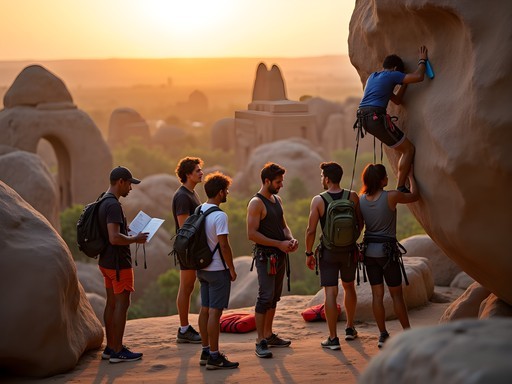
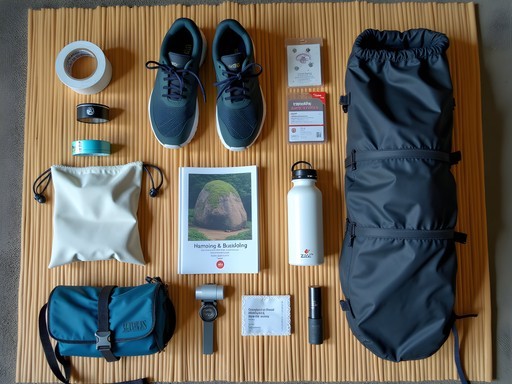



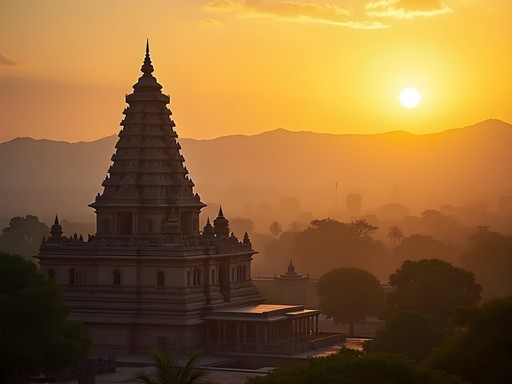







Comments
Savannah Walker
Reading this took me right back to my time in Hampi! The way you captured the juxtaposition of ancient ruins with the climbing culture is spot on. I spent three weeks there in 2022 and found the balance between climbing and cultural exploration to be perfect. For those heading there, I'd recommend staying in one of the homestays in Anegundi for a more authentic experience. Also, don't miss the sunrise climb at Matanga Hill - not technical climbing but the views are worth the early wake-up call! I used my crash pad which was perfect for the terrain, though you can rent pads there too if you don't want to travel with one.
coffeerider
Did you feel safe as a solo traveler there? Planning a trip but a bit nervous about going alone.
Savannah Walker
Absolutely! The climbing community there is super welcoming and it's easy to make friends. Just use common sense like anywhere else. I actually arrived alone but had a climbing group by day 2!
islandperson
Those sunset photos are absolutely stunning! 😍
Kimberly Murphy
Absolutely brilliant post, Zoe! I was in Hampi last year and the climbing scene is INCREDIBLE! Those sunset sessions on the boulders near Hampi Island were magical. For anyone planning a trip, I'd add that November-February is definitely prime time - I made the mistake of staying into March and the heat became brutal. Also worth noting that the locals in the climbing community are super welcoming and often organize informal competitions and gatherings. Did you check out the 'Cosmic Cave' problem? That one nearly broke me!
explorestar
This looks amazing! How difficult would you say the climbing is for someone who's only been bouldering indoors for about 6 months?
Zoe Kelly
Hampi has something for everyone! There are plenty of V0-V2 problems, especially in the Sunny Side area. Just be prepared for the different texture of real granite vs gym holds!
explorestar
That's great to hear! Definitely adding this to my bucket list now.
Bryce Diaz
Hampi changed my life as a climber. I remember sitting atop the Cosmic Cave boulder at sunset, looking out over those ancient ruins and feeling like I was suspended between two worlds. The granite there has a texture unlike anywhere else - it's almost sticky when the conditions are right. My tip: invest in a good pair of approach shoes before you go. I used my approach shoes and they were perfect for navigating those rocky paths between boulders. The heat can be intense though - I climbed mostly early mornings and late afternoons, spending midday exploring the temples or cooling off in the river. Don't miss the Golden Boulder area - some of the most photogenic problems in all of Hampi!
greenbackpacker
Just booked my tickets to Hampi after reading this!!! First time bouldering outside a gym - any tips for a beginner? Should I bring my own crash pad or can you rent them there? So excited!!!
nomadperson
You can rent pads there from Tom & Jerry Climbing Shop for about 300 rupees/day. They're decent quality. Definitely bring your own climbing shoes and chalk though. And start on the easier stuff near Hampi Climbing Club - they'll point you in the right direction!
sunnyvibes
What grade problems did you find there? I'm an intermediate climber (V4-V5) - will I find enough to keep me busy?
Zoe Kelly
Absolutely! Hampi has an incredible range of problems from V0-V12. For V4-V5 climbers, you'll find endless options. The Kushma area and Hemakuta Hill have tons in that range. Grab the Hampi Boulder guidebook when you arrive - worth every rupee!
journeyninja
I was in Hampi last winter and it truly is a climber's paradise. The contrast between ancient ruins and world-class bouldering is something you can't find anywhere else. Spent three weeks there and barely scratched the surface of all the problems. The climbing community is super welcoming too - ended up sharing a guesthouse with some French and German climbers who showed me some hidden gems across the river.
escapeone
Did you stay on the Hampi Bazaar side or Hippie Island? Planning my trip and not sure which is better for climbers.
journeyninja
Definitely Hippie Island (Virupapur Gaddi). That's where most climbers stay. Lots of budget guesthouses and the boulders are right there. The ferry crossing is a bit of a pain but worth it!
luckyone
Wow, those boulders look incredible! Hampi just jumped to the top of my climbing bucket list.
blueclimber7127
Great post! I'm planning a trip in December. How crowded does it get during peak season? Also wondering about transportation from Bangalore - did you take the overnight bus or train?
Zoe Kelly
December is getting busier each year but still manageable! The popular areas like Hampi Island get crowded on weekends, but you can always find quieter sectors. I took the overnight train from Bangalore to Hospet - much more comfortable than the bus and you can store climbing gear easily. Just book well in advance as it fills up during peak season!
Venture X
Premium card with 2X miles, $300 travel credit, Priority Pass